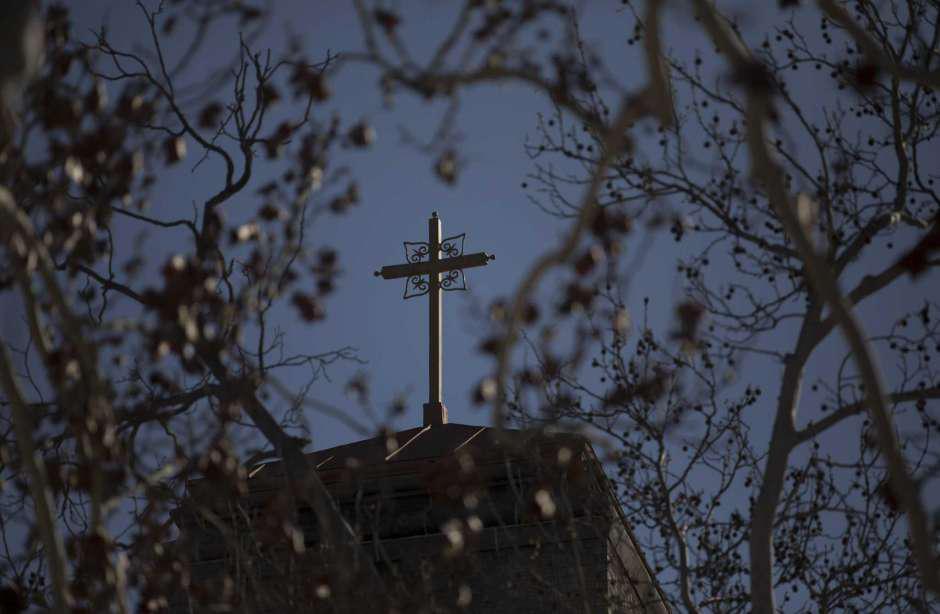|
For Catholics, what to ask your priest — and yourself — about abuse scandal
By Anastasiya Zavyalova
It’s a TV image so common we barely pause to look up: a hive of uniformed law enforcement officers swarming onto a crime scene. But the target of this SWAT-type strike was groundbreaking. Unfolding on air over a “developing story” banner in November, the surprise targeted the Roman Catholic Archdiocese of Galveston-Houston. Instead of contraband or drugs, law enforcers were seeking records linked to a diocese priest, recently released on bond, accused of sexually abusing children. While the optics of a police raid on a church were unusual, the crime allegation behind it is by now familiar. The world has been aware of systemic sexual abuse in the U.S. Catholic Church since 2002, when the Boston Globe’s Pulitzer Prize-winning investigation exposed the breadth of this crime epidemic. Catholics[CK1] might reasonably have assumed then their church would tackle the crisis swiftly and forcefully. Instead, new revelations of crimes by priests against children continue year after year, in stunning lists of dozens, hundreds and thousands. In recent months, in the wake of federal and state investigations nationwide, some dioceses have begun releasing lists of priests accused of child abuse without waiting for the Vatican’s green light. During Christmas weekend, Pope Francis implored predator priests to turn themselves in, swearing the church would bring the guilty to justice. Yet in the very same month, revelations about church sex crimes against children were breaking out in Illinois, California, and New York. As a scholar of scandals and reputation management, I have spent more than a decade analyzing the child sex abuse scandal in the Catholic Archdiocese of Philadelphia, looking at how such events affect organizations and their members. Based on similar cases of institutional crisis, I believe the Church’s slow action during its sexual abuse crisis indicates that someone within the hierarchy conducted a cost-benefit analysis: weighing the pros and cons of addressing institutional child abuse all at once versus slamming the lid on it, facing cases only if they became public - and outside forces insisted on asking questions. In my field, questions are a powerful tool. The right questions can be transformative for church members confronting the sex abuse epidemic in their trusted, and beloved, institution. Painful as it may be, they should be bold about posing these difficult queries to religious leaders. According to organizational research, churchgoing Catholics experience a spectrum of reactions when church sexual abuse is exposed. Some people leave the Catholic Church altogether, seeking spiritual refuge in different denominations. Some abandon organized religion entirely. But many actually become more religious, reaffirming their commitment to the Roman Catholic Church, and vowing to help fight the problem. For parishioners who are now making this decision, here are a series of questions I suggest asking priests, church leaders, and finally themselves. Added to data from outside sources including scholarship and investigative journalism, the answers may offer guidance on how, or whether, to engage with the Church at a devastating time. Q: Have Catholics been too eager to forgive, and if so, what has been the price of that forgiveness? A: In 2005, after a horrifying Philadelphia Grand Jury Report became public, Temple University’s Institute of Public Affairs and The Philadelphia Inquirer polled, among others, Catholics who attended church regularly. Asked whether the Church had prioritized protecting its reputation or preventing abuse, more than 80 percent responded that in the past, the Church prioritized its reputation. The answers changed, however, regarding the Church’s current motives: only 37 percent believed the church still prioritized its image over protecting children. Yet just last August, the Pennsylvania attorney general’s office released documentation of sexual abuse of more than 1,000 individuals by hundreds of priests. Was church members’ forgiveness premature? Q: Why is the proportion of Catholic priests accused of sexual abuse of children almost triple that of the general population? A: According to BishopAccountability.org, which tracks sexual abuse against children within the Catholic Church, 5.8 percent of priests active in the United States between 1950 and 2016 have been accused of sexual abuse. Research on pedophilia estimates that the number of child abusers within the general population totals 2 percent. This disparity suggests some self-selection going on. Q: Does the power structure within the Catholic Church enable the abuse? A: Data collected by BishopAccountability.org shows that approximately two-thirds of sitting U.S. bishops were alleged in 2002 to have kept accused priests in ministry or moved accused priests to new assignments. Because these are not likely choices that would be made by parishioners, power seems to be concentrated in too few hands. Even when church hierarchy takes abuse charges seriously, those in power consistently protect their own. In the Archdiocese of Philadelphia, the 2005 Grand Jury Report revealed, the harshest punishment any accused priest had to face was a “supervised life of penance and prayer.” Now is the time for law enforcement, religious leaders and the faithful themselves to ask and answer these difficult questions. While I know the answers I would want to hear, matters of faith are deeply personal. Here, too, asking questions can strengthen the decision-making process. If you stay, can you make a difference? Does staying make you an enabler? What should you do when a presumed moral authority turns out to be corrupt, even evil? Is it more important to protect the church or to protect children? What does the church owe the victims? And finally, if redemption is an option, what are the practical steps toward making it real?
|
.
Any original material on these pages is copyright © BishopAccountability.org 2004. Reproduce freely with attribution.
